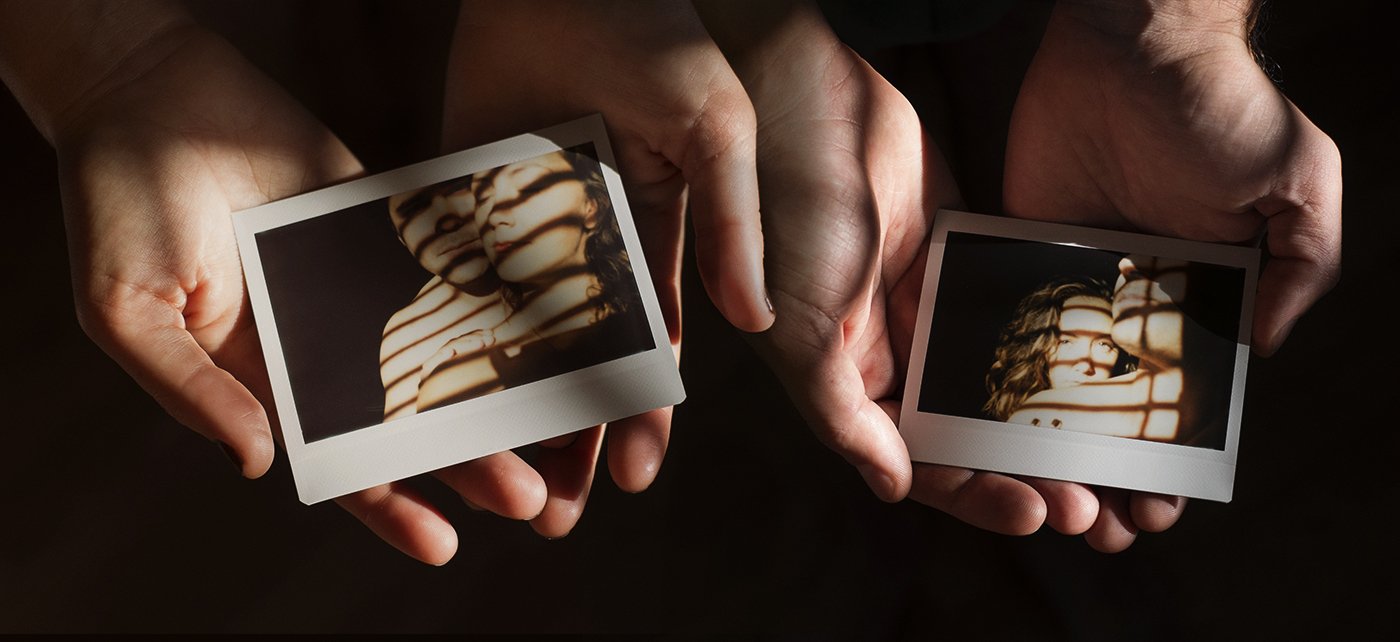Marriage Eve
Jesse Groves, Marriage Eve, 2014
The Unknown in the Familiar
When looking at other photographers' images of their spouses I have often thought they represented examples of the easy and available subject. Getting married myself has changed this perspective. Sharing life with someone in marriage has shown me the possibility that photographers return again and again to their spouse —their subject in life and in art— not for ease but because our medium is the tool with which we look for meaning. This is our most meaningful relationship. And just as relationships constantly evolve and change our subjects are never the same from photograph to photograph, always presenting opportunities for growth from one frame to the next.
In his essay Camera Lucida, Roland Barthes so famously asked who controls the meaning behind a photograph? Is it the photographer, the subject, or the end viewer? When the subject is also the spouse, the intended viewer is often partially both photographer and subject — like a family album. In this case, the negotiation for meaning behind a portrait is intensified and evolves with time.
With this idea in mind, it makes sense that photography has often been the tool used to look at, record, and explore meaning in family relationships and marriage in particular. Barely two months have passed since I married and in this relationship, I find so much that I already know and simultaneously always something to be revealed.
This can be seen even in the marriage ceremony, one hand reaches out and the other is received in return. A ring is given, a symbol of commitment to continually return to the other and receive with it the wisdom of what has come before — devotion in the face of the undetermined.
Photography also holds a wonderful mystery. As a medium it rewards that sense of search; the process is itself a form of discovery. Diane Arbus said, “I never have taken a picture I’ve intended. They’re always better or worse.” This truth keeps us coming back to photography.
Take for example the work of Nicholas Nixon and his series on his wife and her sisters, ‘The Brown Sisters.’ Here you have a series that came to him almost by chance. Nixon recognized after making the second image something of substance, something to come back to again and again for the next forty years. In a series of simple portraits using natural light and unassuming poses Nixon teases out and celebrates the depth of these relationships through this sequence of images. The body of work affirms the family bond and an ever-constant connection between photographer and wife. Throughout the forty years of photographs, though each of the other sisters at times gaze outside the frame and away from the photographer, Bebe (Nixon’s wife) always makes eye contact with the camera and thus her husband. By the early 80s (six years into the project) Nixon includes himself by way of his shadow, which is always centered over the sister with which he shares his life. These are certainly images about time but they also show us what it looks like to grow old, to return to an ever-changing human foundation, and most importantly to affirm the meaning of Fidelity.
The act of looking at whom we love does not inherently make it an easier act; nor is it always easy for the subject. Through this act of making an image we often ask questions of our subject and ourselves. In the photograph, we look for a certain visual perfection only recognized through this process, a sort of stripping away of excess often until the vulnerable comes into the light. But still, in the context of spouse as subject there is great care. Images by Sally Mann portray flawed details of human character. But these flaws are part of what the photographer loves. The work is exacting and demands visual perfection. It holds that complex tension Barthes spoke of between the subject's awareness and the artist's intent. This is best exemplified in Mann’s work of her husband ‘Proud Flesh’ — photographs of care but with an exacting appraisal. Just like Nixon’s work discusses time so does Mann’s. Yet her work reveals an enduring spirit proud beyond the body and the effects of time.
One of the most recognized figures portrayed in 20th-Century photography is probably Eleanor, wonderfully and intimately photographed by her husband Harry Callahan. Callahan believed that which is closest and most familiar to us holds the potential for the greatest revelation. Through his images of Eleanor we see an exploration of form, contrast and beauty. But most resoundingly we see Eleanor’s central role in Callahan's life. He returned, again and again, to photograph her, as though to remark: here I belong with ever more to be discovered photographically and emotionally.
In an age of photography with an overinflated sense of self-importance and simultaneously a fear of the sentimental, there remains value in making work of those we love. Even though the subject is so personal, these images shape us as individuals and communities with a sense of depth. Larry Sultan said that we construct memories of our family through photographs. To take this a step further, we also construct our concept of relationship through photographs of the ones we love.
In photographing our family we do a few things: we do it to record those we love, as a form of reflection, and to question and discover the unknown — the mysterious within the familiar.


